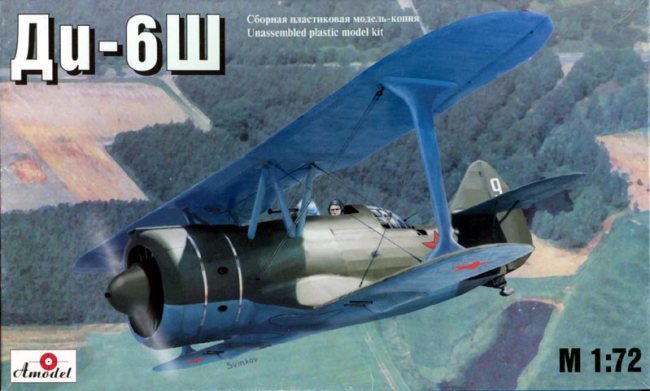
A-Model 1/72 Kochyerigin Dl-6
|
KIT # |
7211 |
|
PRICE: |
$ |
|
DECALS: |
|
|
REVIEW: |
|
|
NOTES: |
|
СОЗДАНИЕ ШТУРМОВИКА
KOCHYERIGIN TsKB-11 (DI-6)
USSR - 1935

|
HISTORY |
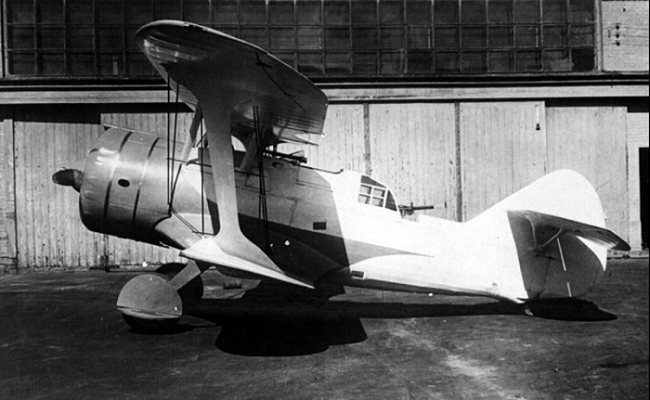
In the mid-1930s, Soviet fighter tactics were wedded to the principle of close co-operation between groups of fast monoplanes and groups of highly maneuverable biplanes. In an attempt to devise an aircraft capable of engaging both classes of fighters with equal success, a team led by Сергей Александрович Кочеригин (Sergei Aleksandrovich Kochyerigin) and Владимир Панфилович Яценко (Vladimir Panfilovich Yatsenko) were assigned to the TsKB -"Центральное Конструкторское Бюро" (Tsentral'noye Konstruktorskoye Byuro, Central Construction Bureau) and designed what was then designated TsKB-11.
The TsKB-11 had an inward retracting landing gear and a Wright Cyclone R-1820-F-3, which produced 710 hp, powered the first prototype. The pilot's cockpit was open, but a glazed canopy enclosed the rear gunner's cockpit. Armament consisted of four-fixed forward firing 7.62-mm ShKAS machine guns and an addition ShKAS in the rear cockpit on a maneuverable mount for the gunner.
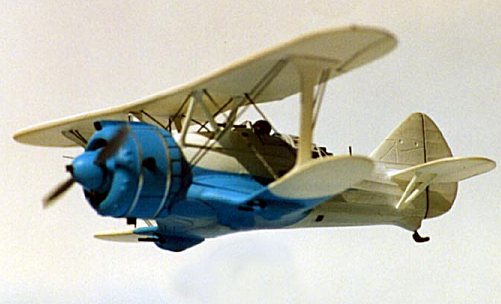 The wings were
only 10 inches longer in span than those of the I-15 and TsKB-11 was only 3 foot
longer in length. The retractable landing gear, however, lead to a much greater
top speed for the TsKB-11, 239 mph versus 224 mph for the I-15. There was a give
away in maneuverability, as the TsKB-11 took 11 seconds to perform a tight 180°
turn, whereas the I-15 did the same in only 8 seconds.
The wings were
only 10 inches longer in span than those of the I-15 and TsKB-11 was only 3 foot
longer in length. The retractable landing gear, however, lead to a much greater
top speed for the TsKB-11, 239 mph versus 224 mph for the I-15. There was a give
away in maneuverability, as the TsKB-11 took 11 seconds to perform a tight 180°
turn, whereas the I-15 did the same in only 8 seconds.
It was envisioned that the rear gunner could engage single-seat biplane fighters in a tight turning dogfight and when dealing with faster monoplanes from the rear. The gunner had an excellent field of fire due to the horizontal tail surface being mounted on the vertical tail in lieu of the fuselage.
Flight trials commenced in early 1935. After completing State Acceptance Trials performed between May and November 1935, the fighter was ordered into production as the ДИ-6 "DI-6" (Двухместный Истребитель-6, Dvukhmestnyi Istrebitel-6, two-seat fighter-6). Deliveries to the VVS commenced in late Spring 1937. In all 222 aircraft were produced before construction was stopped in late 1939. Only one air regiment was issued the DI-6 in the fighter role, this regiment saw action against the Japanese during the Khalgin-Gol Conflict in the Summer of 1939 and they were decimated by the nimble Ki-27s. After this the DI-6 was relegated to the "Shturmovik" role and limited production aircraft at the end were designated ДИ-6Ш "DI-6Sh".
The Cyrillic title "СОЗДАНИЕ ШТУРМОВИКА" is transliterated as "SOZDANIE SHTURMOVIK" and means "THE MAKING OF A SHTURMOVIK".
|
CONSTRUCTION |
Cockpit:
The cockpit was build box stock. I did cut the incorrect control stick handle off and replace it with a more correct loop handle. The figures came with the kit, but I had to install the gunner for the pilot, as this figure was thinner and the fit was better. I had to cut away an eighth of an inch from his left hand to clear the instrument panel. His shoulders needed to be reduced by sanding quite a bit in order for the fuselage halves to join. The pilot's seatback was molded with an armored headrest, which may or may not have been on production or 'Shturmovik' aircraft, but were definitely not on the TsKB-11. Therefore this was cut away and sanded to fit correctly.
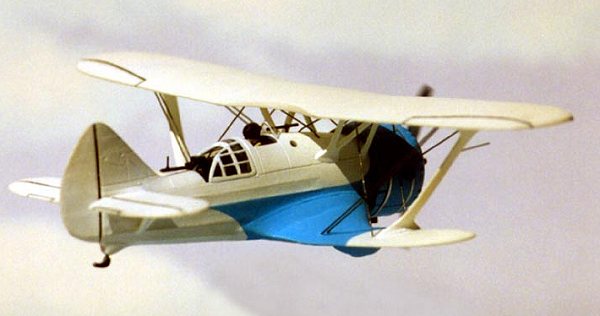 The cockpit was
paint light ghost gray, with the instrument panel painted semi-gloss black.
Instruments were done using Waldron-punched disks of white trim film decal and
Reheat Models instrument gauges in 1/72 scale. I used a couple of Reheat Models
control and data placards, but little can be seen with the pilot in place.
The cockpit was
paint light ghost gray, with the instrument panel painted semi-gloss black.
Instruments were done using Waldron-punched disks of white trim film decal and
Reheat Models instrument gauges in 1/72 scale. I used a couple of Reheat Models
control and data placards, but little can be seen with the pilot in place.
The figures were primed in medium gray and brush painted using acrylics. Light ink washes were applies and all was finished with a coat of clear flat.
Engine and cowling:
A-Model did an excellent job here. The engine is a very good mold and includes a separate exhaust collector with exhaust stubs. I replaced the exhaust stubs with sections of styrene tubing. The engine was painted oxidized aluminum, with the unseen gear casing painted engine gray. The exhaust collector ring and exhaust stubs were painted burnt iron.
The cowling is a five-part affair and will require patience to assemble and maintain the roundness. I used thin strip of masking tape to secure the four-part main cowling and the fifth front cowling piece in the shape desired and the fit (once cleaned up) was really good. I applied a little Tenax to the insides of the pieces and let this set an hour. I then removed the strips of masking tape and applied Tenax to the exterior attachment points. Once dried, I applied some CNS to the interior attachments to make sure this thing did crumble in the finishing stages. It really was not as bad as it sounds, but one must used care here. The cowling was painted light ghost gray on its interior.
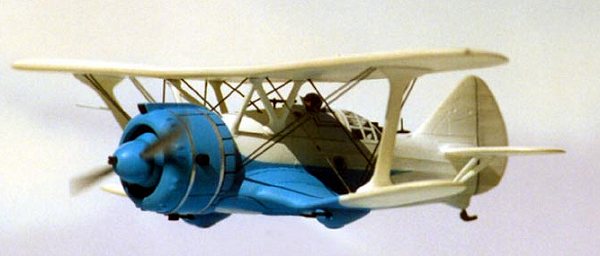 The propeller
and spinner were molded as one piece. As it was, there was no way I would be
able to clean up the spinner without removing the propeller blades, so these
were carefully cut away with an X-Acto #11 blade. I added a 3-mm of plastic rod
of suitable size to the propeller blade ends where they joined the cowling. A
section of 3/32-in brass rod was inserted into the spinner and I drilled out the
location of each propeller blade to except the added styrene rod.
The propeller
and spinner were molded as one piece. As it was, there was no way I would be
able to clean up the spinner without removing the propeller blades, so these
were carefully cut away with an X-Acto #11 blade. I added a 3-mm of plastic rod
of suitable size to the propeller blade ends where they joined the cowling. A
section of 3/32-in brass rod was inserted into the spinner and I drilled out the
location of each propeller blade to except the added styrene rod.
Once the CNA had set, I chucked the spinner in my Dremel Moto-Lathe. Here it was cleaned up with 3 grades of Flex-a-grit. A section of styrene tube was cut and the end knicked out for the Huck's starter, this was painted steel and inserted into the spinner in the final assembly with PVA glue. Propeller blades were painted silver with black trim film decal used for the anti-glare backsides. They were set aside until final assembly and likewise attached with PVA glue.
Exterior:
This was really well molded, but A-Model committed one fatal flaw, the horizontal tail attachment locations are far too low. They should mount about a quarter of the way up from the bottom of the vertical tail and not on the fuselage spine. Every thing fit exceptionally well (once again, after clean up) with little or no filling. Even the N cabane strut fit very well, but use extra care to make sure the upper wing aligns okay before they set. Once the upper wing is attached to the N-struts, the outer wing I-struts simply snap into place.
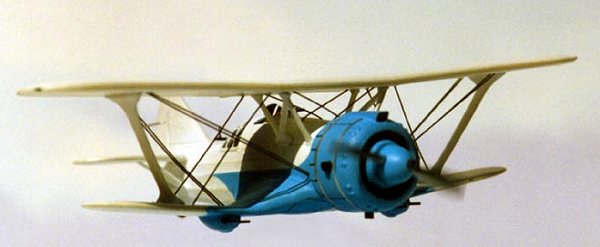 I had to
replace the machine gun barrels with 25-gauge hypodermic needle sections. I used
a section of an insulin hypo for the starboard I-strut pitot tube. The TsKB-11
had two glazing portals just in front of the instrument panel on the upper
fuselage and these were not represented on the kit. I drilled out two holes of
appropriate size and these were filled with Krystal Klear in the final assembly.
The fuselage has a tail wheel molded onto the port half, but the TsKB-11 used a
fixed metal landing skid. I cut away the tail wheel and scratch-built a landing
skid from copper wire and styrene strip.
I had to
replace the machine gun barrels with 25-gauge hypodermic needle sections. I used
a section of an insulin hypo for the starboard I-strut pitot tube. The TsKB-11
had two glazing portals just in front of the instrument panel on the upper
fuselage and these were not represented on the kit. I drilled out two holes of
appropriate size and these were filled with Krystal Klear in the final assembly.
The fuselage has a tail wheel molded onto the port half, but the TsKB-11 used a
fixed metal landing skid. I cut away the tail wheel and scratch-built a landing
skid from copper wire and styrene strip.
The kit's windshield and telescope sight left much to be desired. I used a section of 25-gauge hypo for the sight and scratch-build a windshield from butyrene sheet, as it bends better than styrene. The rear glazing is not the best in the world, but it fit and I used it. The flying and landing braces were done with very fine wire.
|
PAINT |
The first production prototype was finish in white with sky blue used in its special paint scheme. Neither soviet stars nor any stencil markings were seen until it met State Acceptance Trials and was accepted into the VVS. Production DI-6 aircraft possessed stars on the upper and lower wings, fuselage halves, and often vertical tail halves. Unit number marking were generally applied to the vertical tail in a color designating the unit. Camouflage was tractor green over underside blue.
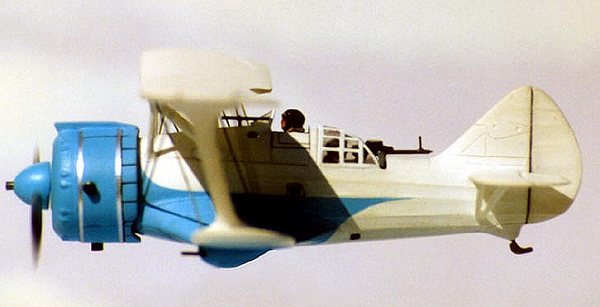 I used Polly Scale Reefer
White as my primer and base coat. I reduced the photo of the actual aircraft to
the model's scale and cut out the demarcations to use as a template for masking.
After masking the area to remain white, the demarked areas received two coats of
Polly Scale Russian Underside Blue. The engine's gear casing cover and the
spinner were also painted underside blue at this time.
I used Polly Scale Reefer
White as my primer and base coat. I reduced the photo of the actual aircraft to
the model's scale and cut out the demarcations to use as a template for masking.
After masking the area to remain white, the demarked areas received two coats of
Polly Scale Russian Underside Blue. The engine's gear casing cover and the
spinner were also painted underside blue at this time.
Gratitude's:
First of all, a special thank you goes out to Boris Krotkov for sending this rare little model to me. The DI-6 has been on my list for rare Soviet biplane models for quite awhile. With this and the Pavla release of the I-207/3, I only need the Nikitin-Shyevchenko IS-1 now. Thanks also go out to Boris for correcting my obscure Russian and helping me set the records straight on the paint scheme's other color.
September 2000
Copyright ModelingMadness.com. All rights reserved. No reproduction in part or in whole without express permission from the editor.
If you would like your product reviewed fairly and fairly quickly, please contact the editor or see other details in the Note to Contributors.